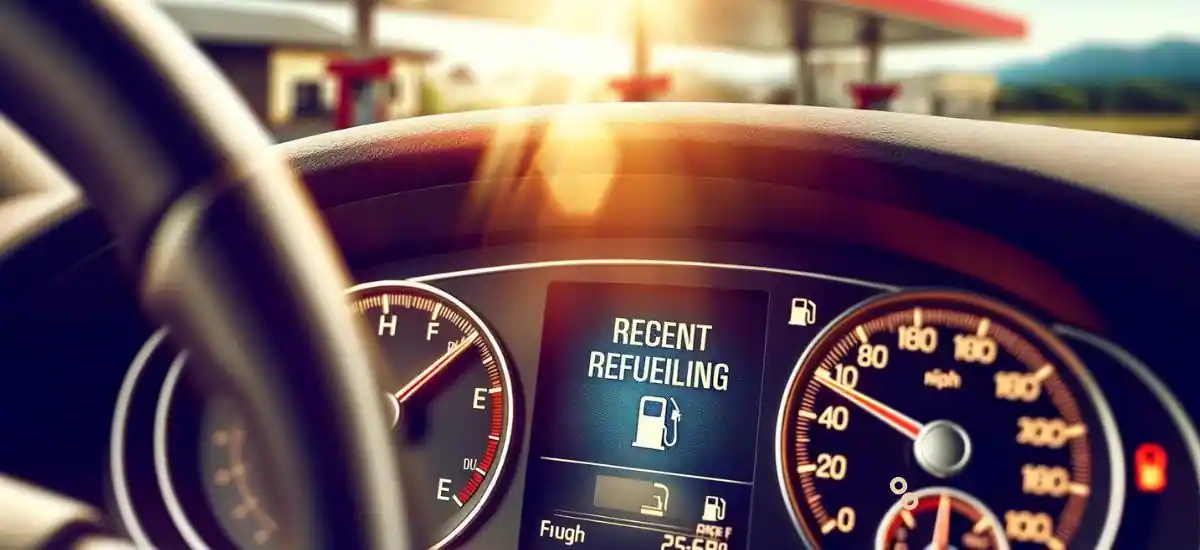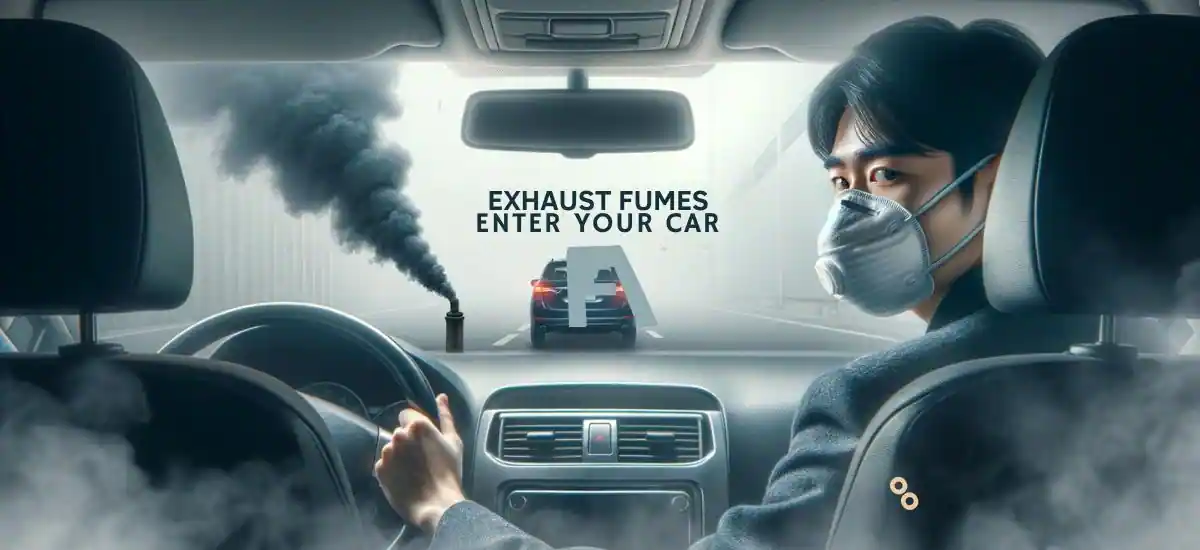My Car Smells Like Gas But Isn't Leaking

One of the most frustrating problems homeowners face, especially as the seasons change, is a furnace or AC unit that seems to be working, but just isn’t delivering the heating or cooling punch it used to. You might be cranking up the thermostat, yet the house remains stubbornly lukewarm in winter or stuffy in summer. While professional help is sometimes necessary, many times the issue can be diagnosed and addressed with a little DIY troubleshooting. This article focuses on diagnosing and resolving a related but different problem: a gas smell inside your car when there is no obvious leak.
Imagine this: You hop in your car, start the engine, and a distinct whiff of gasoline fills the cabin. Your first thought is probably a fuel leak, a potentially dangerous situation. You check under the car – no puddles. You pop the hood – no obvious signs of fuel spraying or dripping. So, what's going on? Why does your car smell like gas, even without a visible leak?
Understanding the Gas Smell Mystery
The scent of gasoline is powerful and easily detected, even in small concentrations. Pinpointing the source can be tricky because the odor can travel and linger. Before you panic, understand that several common issues can cause a gas smell in your car, many of which are relatively minor and easily fixed.
Important Safety Note: If the gas smell is very strong, persistent, and accompanied by other symptoms like engine misfires, stalling, or difficulty starting, do not attempt DIY troubleshooting. Immediately contact a qualified mechanic. A significant fuel leak, even if not readily visible, can be a serious fire hazard.
Step-by-Step Troubleshooting: No Tools Required
Let's start with the simplest checks – those requiring no tools at all. These are the easiest to perform and can often point you in the right direction.
1. Recent Fueling Habits
Think back to your last trip to the gas station. Did you:
- Overfill the tank? This is a common culprit. Overfilling forces fuel into the vapor recovery system, which is designed to handle fumes, not liquid fuel. The excess fuel can saturate the charcoal canister (more on that later) and release gasoline vapors.
- Spill any fuel on yourself or the car's exterior? Even a small amount of spilled fuel can create a noticeable odor. Check your shoes, clothes, and the area around the fuel filler door for any lingering traces.
- Fail to tighten the gas cap properly? A loose or damaged gas cap is a frequent cause of gas smells. The cap seals the fuel tank, preventing vapors from escaping.
Action: Ensure the gas cap is properly tightened. If you suspect overfilling, drive the car for a while. The smell should gradually dissipate as the excess fuel evaporates. Thoroughly clean any spilled fuel with soap and water.
2. Check the Passenger Cabin and Trunk
Believe it or not, sometimes the source of the gas smell isn't car-related at all. Have you recently transported any of the following?
- Gasoline cans or other fuel containers? Even if they were supposedly empty, residual fumes can be strong.
- Lawn equipment or tools that use gasoline? These items can leak or emit fumes.
- Anything contaminated with gasoline or other solvents?
Action: Remove any potentially problematic items from the car. Thoroughly ventilate the cabin and trunk. Consider using an odor neutralizer designed for automotive use.
3. Observe Driving Conditions
Does the gas smell appear only under specific conditions? For example:
- After a long drive? This could indicate an issue with the evaporative emissions (EVAP) system.
- When the engine is cold? This might suggest a problem with the fuel injectors or cold start system.
- After hard acceleration? This could point to a fuel pressure regulator issue.
Action: Note the specific conditions when the gas smell is most noticeable. This information will be helpful when troubleshooting further or when describing the problem to a mechanic.
Troubleshooting with Basic Equipment (Minimal Tools)
If the simple checks haven't revealed the source of the gas smell, it's time to use some basic tools and perform more detailed inspections. You'll need:
- A flashlight: Essential for inspecting dark areas.
- Gloves: To protect your hands from dirt and chemicals.
- Safety glasses: To protect your eyes.
- A small mirror: For inspecting hard-to-reach areas.
1. Inspect the Fuel Filler Neck and Surrounding Area
The fuel filler neck is the pipe that connects the gas cap to the fuel tank. Check for:
- Cracks or rust on the filler neck itself.
- Damage to the rubber seal around the filler neck.
- Loose or damaged hoses connected to the filler neck.
Action: Use the flashlight and mirror to get a good look at all sides of the filler neck. If you find any damage, the filler neck may need to be replaced. This is a relatively simple repair, but it's best left to a professional if you're not comfortable working on fuel system components.
2. Check Fuel Lines and Connections (Visually)
Trace the fuel lines from the fuel tank to the engine. Look for:
- Cracked, brittle, or leaking fuel lines.
- Loose or corroded fuel line connections.
- Any signs of fuel staining or dampness around the fuel lines.
Action: Never disconnect fuel lines yourself unless you have the proper training and equipment. Visual inspection is key. If you spot any leaks or damage, have the fuel lines inspected and repaired by a professional. Fuel leaks are a fire hazard!
3. Inspect the Fuel Injectors (Visually)
Fuel injectors spray fuel into the engine's cylinders. While you can't directly inspect the injectors without removing them, you can look for:
- Signs of fuel leakage around the injectors. Look for dampness or fuel staining.
- Damaged or cracked injector bodies.
Action: If you suspect a leaking fuel injector, have it inspected and replaced by a professional. This requires specialized tools and knowledge.
4. Check the Charcoal Canister (EVAP System)
The charcoal canister is part of the evaporative emissions (EVAP) system, which prevents gasoline vapors from escaping into the atmosphere. It's typically located near the fuel tank or under the hood.
- Visually inspect the canister for damage, such as cracks or punctures.
- Check the hoses connected to the canister for cracks, leaks, or disconnections.
- Smell the canister. Does it smell strongly of gasoline? This could indicate that it's saturated with fuel, often due to overfilling the gas tank.
Action: If the canister is damaged or saturated with fuel, it may need to be replaced. Replacing a charcoal canister is generally a straightforward repair, but consult your car's repair manual for specific instructions. If you suspect a more complex EVAP system problem, seek professional help.
5. Check the Oil Dipstick
This might seem odd, but a gas smell on the dipstick can indicate a serious issue. Pull out the oil dipstick and smell it. Does it smell like gasoline? If so, this could mean that fuel is leaking into the engine oil. This can be caused by:
- A leaking fuel injector.
- Worn piston rings.
Action: If you smell gasoline on the dipstick, do not drive the car. This is a serious problem that can damage the engine. Have the car inspected by a professional immediately.
When to Call a Professional
While many gas smell issues can be resolved with DIY troubleshooting, some problems are best left to the experts. Here are some situations where professional help is essential:
- Any suspected fuel leak that you cannot definitively identify and repair. Fuel leaks are a fire hazard and should be addressed immediately.
- Engine misfires, stalling, or difficulty starting, especially when accompanied by a strong gas smell. This could indicate a serious fuel system problem.
- A gas smell on the oil dipstick. This indicates fuel is contaminating the engine oil, which can cause significant engine damage.
- You are uncomfortable working on fuel system components. Fuel systems are complex and potentially dangerous.
- You have tried the DIY troubleshooting steps and the gas smell persists. This could indicate a more complex problem that requires specialized diagnostic equipment.
- You suspect an EVAP system problem that goes beyond a simple charcoal canister replacement. EVAP systems are complex and require specialized tools and knowledge to diagnose and repair.
Final Thoughts
A gas smell in your car, even without a visible leak, can be alarming. However, by following these troubleshooting steps, you can often identify the source of the odor and resolve the problem yourself. Remember to prioritize safety and seek professional help when necessary. With a little patience and a systematic approach, you can get rid of that unpleasant gas smell and enjoy a worry-free driving experience.
Disclaimer: This article provides general troubleshooting advice. Consult your car's repair manual for specific instructions and safety precautions. Always exercise caution when working on your car. If you are unsure about any procedure, seek professional help.










